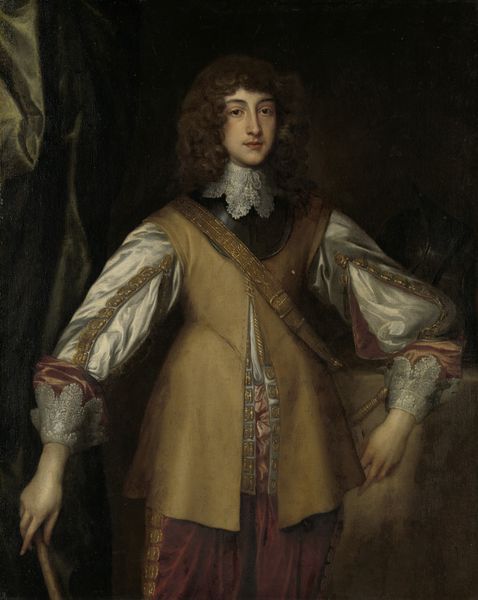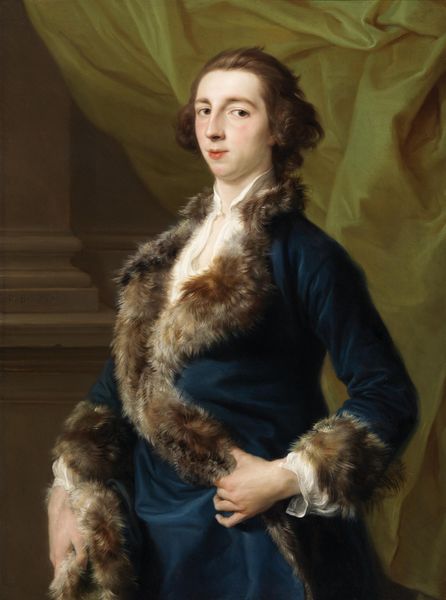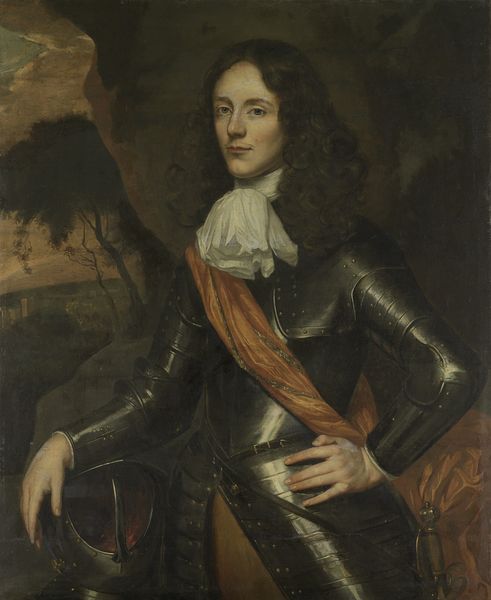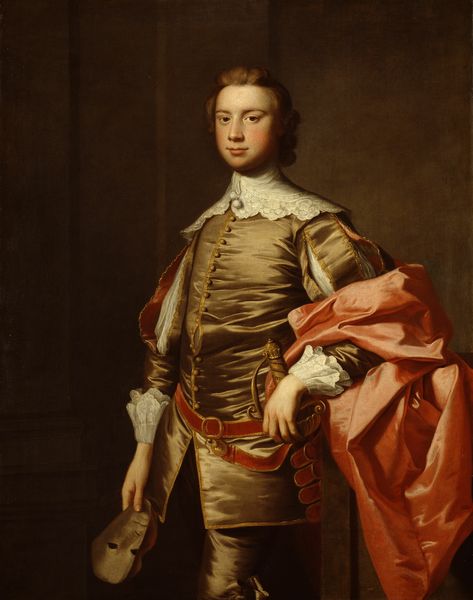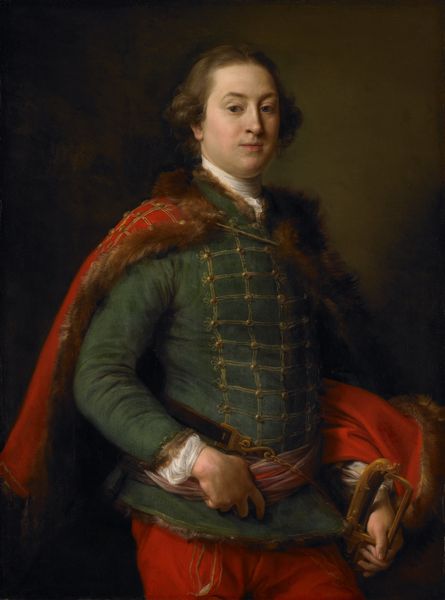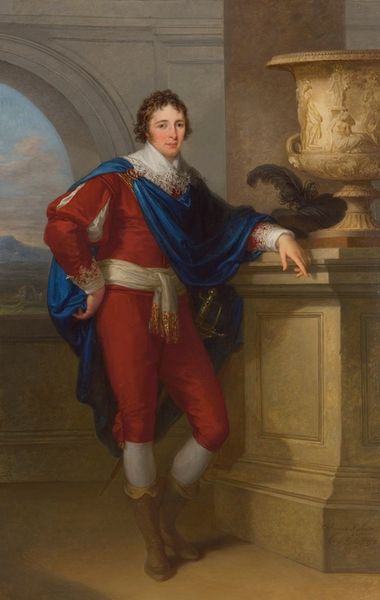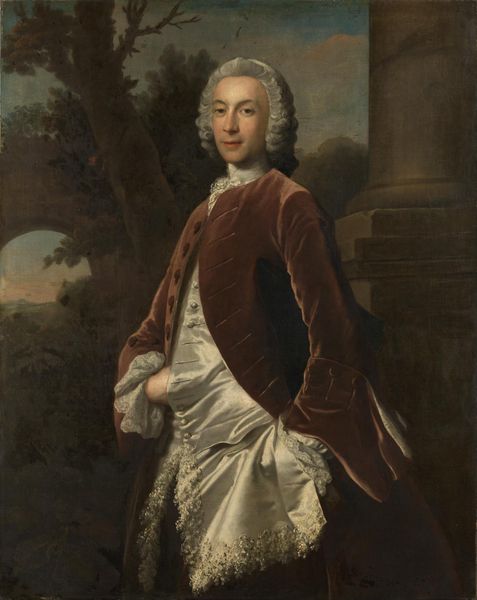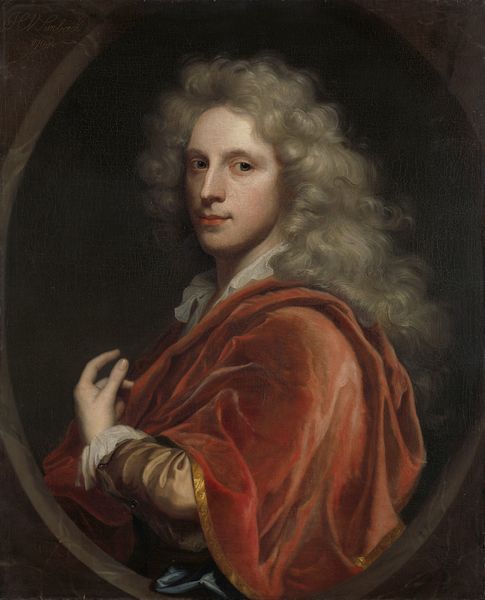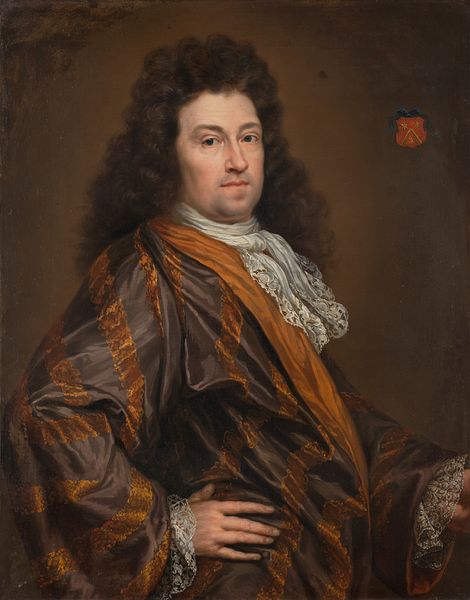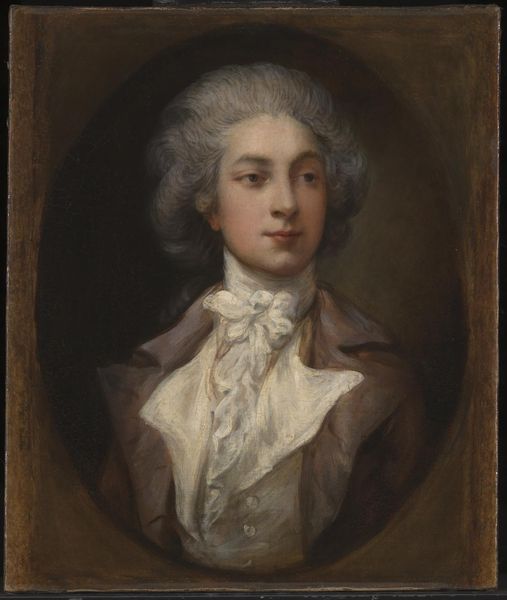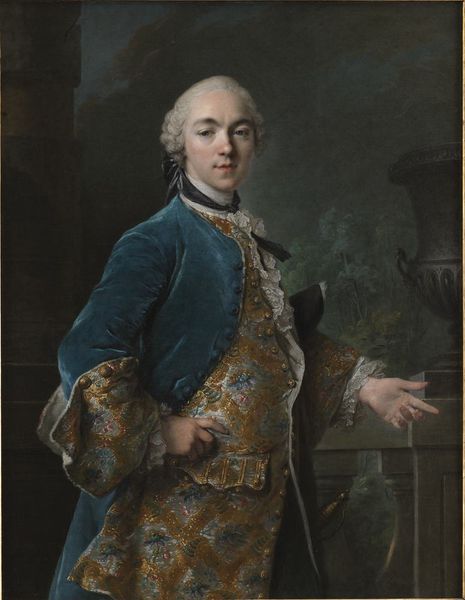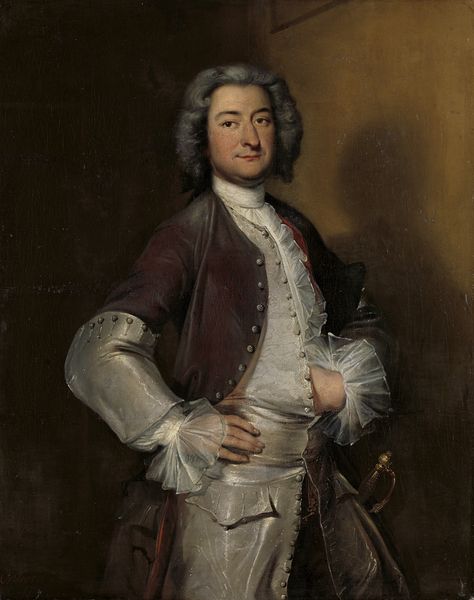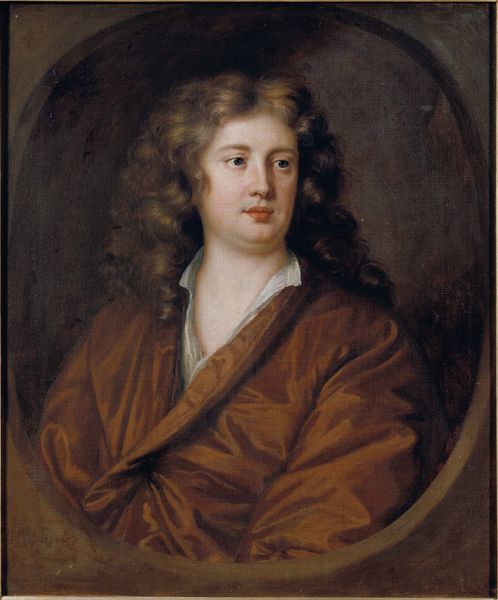
Charles Beauclerk (1670–1726), Duke of St. Albans 1690 - 1695
0:00
0:00
painting
#
portrait
#
character portrait
#
baroque
#
painting
#
portrait subject
#
portrait reference
#
portrait head and shoulder
#
men
#
animal drawing portrait
#
portrait drawing
#
history-painting
#
facial portrait
#
academic-art
#
portrait art
#
fine art portrait
#
celebrity portrait
Dimensions: 49 7/8 x 40 1/2 in. (126.7 x 102.9 cm)
Copyright: Public Domain
Curator: Before us hangs a portrait of Charles Beauclerk, Duke of St. Albans, painted between 1690 and 1695 by Sir Godfrey Kneller. What leaps out at you? Editor: Honestly, that cool detachment. The slightly elevated chin, the silk thrown over the shoulder... It screams, "I'm aware of my privilege". There’s also a youthful vulnerability there, hiding just beneath the surface, wouldn't you say? Curator: Interesting you pick up on that. Beauclerk was, in fact, the illegitimate son of King Charles II and Nell Gwyn – a famous actress. So that “awareness” probably came early. The painting showcases the baroque style Kneller was celebrated for; notice how he uses light to give the fabrics this almost liquid quality? The portrait marks Beauclerk's entry into aristocracy, a visual assertion of legitimacy carved out in paint. Editor: Absolutely. And that staged, classical background - a sort of Roman ruin meets misty countryside - adds to this invented heritage. He’s not just Charles Beauclerk, but Charles Beauclerk channeling some ancient hero! It speaks to the performative aspect of status, especially for someone like him trying to cement their place in the hierarchy. Curator: Exactly! Kneller was a master of conveying status through subtle cues – the fabrics, the pose, even the light catching in his hair. He built an image carefully calibrated for maximum impact. Though there's a tension here, isn't there? Between the Duke's natural youthful features, and the artist's clear intention to ennoble his position and solidify social messages. Editor: I agree. It’s as if we're seeing both the person and the persona, a balancing act between nature and nurture, between inherent character and assigned role. Perhaps that underlying tension adds another interesting layer to it all. Curator: Indeed, the painting prompts reflection not only on the individual depicted, but also on the socio-political climate that shaped his identity, which can keep our mind in a state of discovery as we come to face these masterpieces from our history. Editor: And perhaps, through it, to re-examine the stage that we too perform upon.
Comments
No comments
Be the first to comment and join the conversation on the ultimate creative platform.
